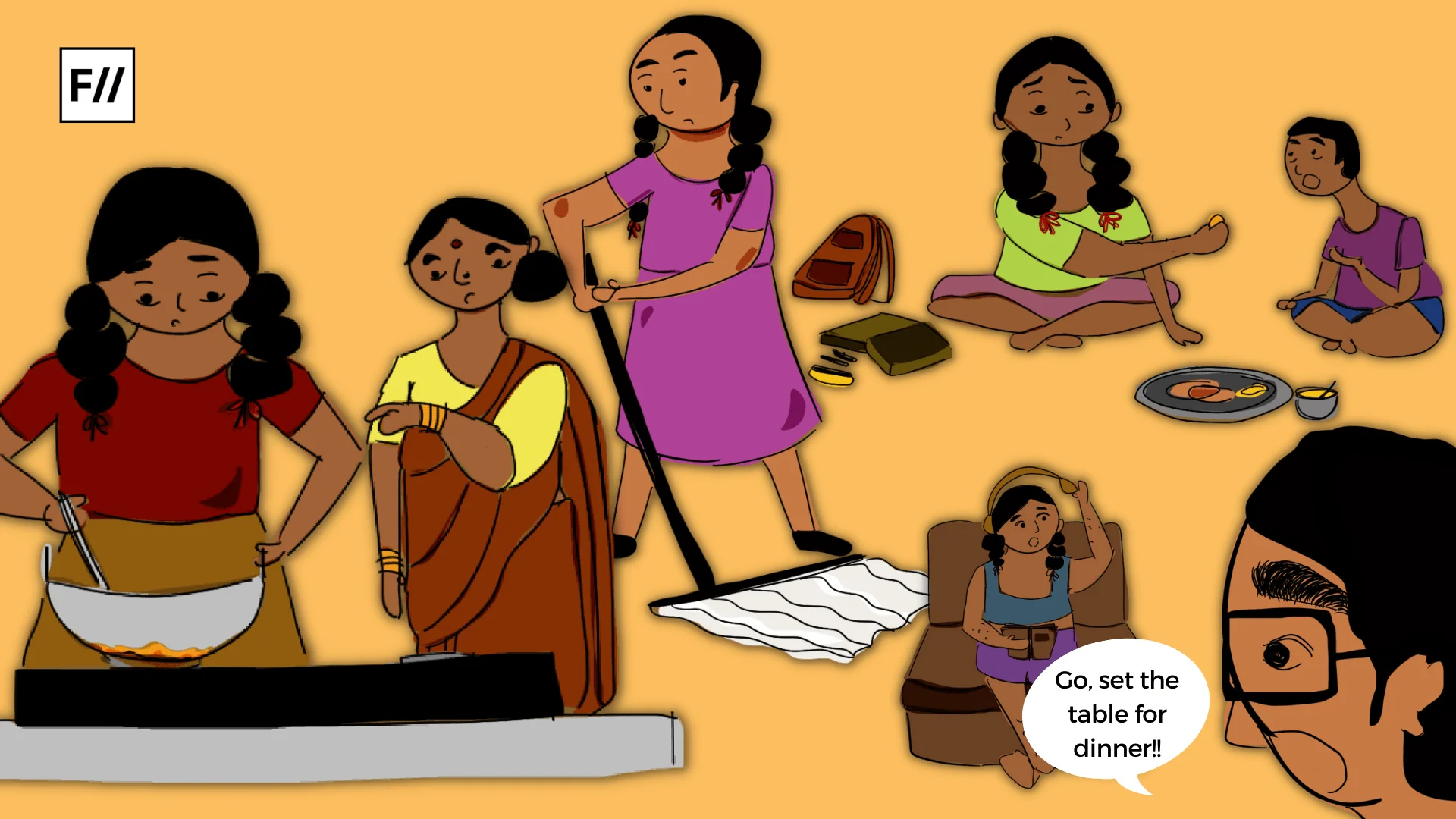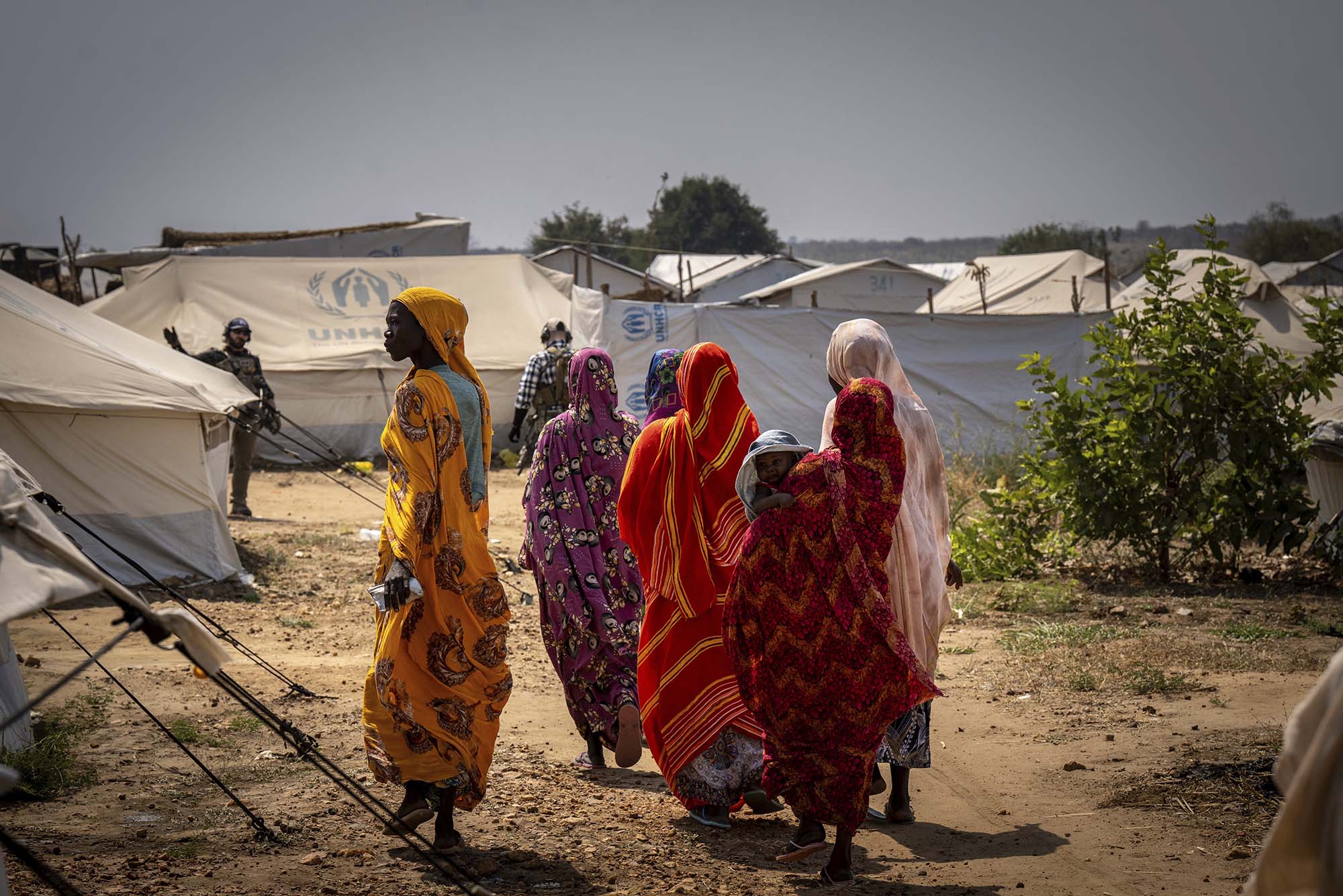Haryana is a state with a rich culture and history that goes far back to the Indus valley civilization. It was also one of the states that made the green revolution a success and today, it is the second largest contributor to the central pool of food grains. Haryana has nurtured numerous sportspersons, politicians and is known for its cuisine as well.
Despite, like every other place, Haryana too has its own challenges in terms of the lowest female sex ratio at birth, and the presence of social structures like the khap panchayats that are infamous for issuing farmans against women, restricting their liberty and mobility in public spaces.
In recent times, the Haryanvi music industry and its pop culture has caught mainstream attention especially with the huge fan following garnered by dancer and stage performer Sapna Chaudhary, who has now become a household name. She was the third most googled person in India, leaving behind Priyanka Chopra and Nick Jonas. In the past few years, the Haryanvi music industry has also been attracting wider public attention due to increased internet connectivity and easier access to YouTube content.
The most watched Haryanvi song on YouTube is 52 Gaj ka Daman which is said to represent the Haryanvi culture where the wife demands her husband to buy her a Daaman, refusing to fetch water from the well otherwise. Daaman- Chundari was the traditional attire worn by the women of the generation of my grandmother. It has been seen as the cultural symbol of Haryana along with Ghunghat/Ohla (Lugaai ki sharm ka gehna). But one needs to understand that the Daaman weighs around 10kg and it becomes extremely inconvenient to carry while performing household and field work.
The argument that earlier, women used to take pride in wearing a Daaman mimics the similar argument that the women in the West liked to wear corsets. The primary reason behind designing such clothing for women was restricting their mobility, and at the same time ,making them presentable to the male eyes. Moreover, the song at one place captures a moment where the husband beats up the nagging wife with a stick, which is portrayed to be normal. To depict such sequences as an everyday instance in a state that already records a high rate of violence against women is extremely problematic.
Another song by Gajendrer Phogat and Anu Kadyan titled “Bahu Kale ki”, which features racist lyrics where the wife complains to her husband about people teasing her by calling her the ‘wife of a black skinned husband‘ has gained over 600 million views on YouTube. Anu Kadyan has a history of receiving threats for the controversial lyrics of Tanka Fit Se. Though the song falls short of asserting female autonomy and sexual agency, and feeds into the existing gender stereotypes (like the mention of girls using mobile phones to talk to their lovers and bunk college classes to meet them, or portraying women to enjoy sexual harassment), it makes an attempt to express women’s desires in courtship and romantic relationships.
It features scenes showing women sharing and enjoying intimate moments with their partners in public, juxtaposed with the lyrics, “Ashiqui mein chhora se bhi tez ghani chhori hain” meaning girls are far ahead as compared to boys when it comes to expressing desires. There is also a line that goes, “Kapde ki taraha ye yaar bhi badalati, marzi ki karti ye kisi ki na sunti”, which translates to mean that girls are also free to not stick to just one partner but choose lovers as they wish. At one place she also advocates court marriages, removed from the usual ritualistic ceremonies. The song wasn’t received well by the older generation who accused her of spoiling young girls and misrepresenting the Haryanvi culture. The same accusation has earlier been made against Sapna Chaudhary.
Another very famous song Solid Body portrays the scene from a wedding night. In the entire song, the wife is seen expressing her reservations about having sex with a husband who has a heavy build because she is fragile and might get hurt. In the final line, the husband threatens to use force if she says no to his sexual advances.
Some of the currently famous pop singers started their career through the Ragni competitions which have become another face of Haryanvi pop culture. The exact history of these competitions in not known. They are conducted at different places in Haryana and give a platform to local artists. Ragni is a kind of folk music performed in a Saang (a musical theatre).
The Saang and Ragni form of theatre was popularised by Dada Lakhmi Chand, a very revered personality in Haryana who has composed many Ragnis on various themes that gives us a glimpse of the Haryanvi culture. Other prominent figures in this field were Dada Mehar Singh, Pale Ram, Mange Ram, Sudesh Sharma and many more who took the folk culture to the masses. Initially, Ragnis were performed by male singers and women weren’t allowed to participate in a Saang. Thus, male artists would cross dress and play the role of female characters.
With time, female artists got access to this heavily male dominated music and theatrical art form. The Saang was gradually replaced with Ragni competitions to gain popularity among masses. With the boom of technology, these events got recorded on video tapes and cassettes, reaching almost every household. Though the participation of female artists increased over the years, there is no substantial change in the participation of women as audience. Even today, the audience is almost exclusively male. This creates pressure on female artists to cater to their demands and consequentially, the lyrics and the dance moves are highly sexist and sexually suggestive. Nudity is abhorred since it threatens the masculine idea of female chastity and cultural gender norms. Bodily exposure is not allowed but suggestive dance moves are highly encouraged and the audiences shower female performers with money and mass cheering.
Though we have a long way to go in the realm of gender parity, the mainstreaming of Haryanvi pop culture might help in eradicating some of the misogynistic ideals from the collective consciousness of the society. It is promising to note that more and more women are gaining access to education and employment, amidst the violent masculinity that mandates their restriction to the domestic space
Haryana is a very conservative and patriarchal society where most women still wear veils while stepping out of their domestic spaces. Even in their homes, when an elder male figure enters the house, they cover their heads. Girls are still considered a burden that needs to be disposed off as soon as they come of age to prevent them from bringing the family shame by eloping with a lover. The family honor is the most important thing and honor killings are a common tool to punish deviations.
Ghunghat(head veil) is said to be the identity of Haryanvi culture, and is even promoted through government advertisements. This is a practice that remains less talked about in the mainstream feminist discourse as compared to the conversations on the Hijab. The pop culture in Haryana reflects the patriarchal reality of the communities. Women are shown in their traditional roles, often nagging their husbands to buy them clothes and other items. The nok jhonk between Devar Bhabhi (Sandal Song) and Jeeja Sali (Sali Aaja Atariya) is another prominent theme in these songs, where both of these relationships are romanticised and attempts are made to suggest sexual exchanges between the two. A very popular song Pilura romanticises the stalking of a young married woman by a Tau. We can hardly see nudity in Haryanvi songs but the covert sexualisation of female bodies is rampant.
Also read: Is Ghoonghat The Identity Of Haryana? Patriarchal Control Over A Woman’s Body & Sexuality

The good woman – bad woman binary is also sustained by condemning women who do not conform to traditional norms or step outside of their houses to create an identity of their own. The female singers who perform in locally held Ragni competitions are often termed as women of loose character and generally face harassment of different kinds from their male counterparts or the audience. Those artists who are bold, vocal and unhindered in their spirits are looked down upon and rarely respected in the Haryanvi society.
Their performance is mostly consumed by male audience who address them with sexually derogatory terms after they are done watching their videos. The consistent attacks on women, many a times of violent nature, prove how male centric the social conscience is, and how easily it is triggered by women who show any sign of sexual liberation. Harshita Dahiya, Bina Chaudhary, Mamta Sharma, Pasi Nayyar, Lalita Sharma are just a few examples of women who have borne the brunt.
The onus to save the traditional culture is still put on women while men are largely the consumers of content that is said to be vulgar and provocative. Unfortunately, this type of hypocrisy is not limited to Haryana. Men are universally seen to apply dual standards when it comes to defining the socially acceptable conduct and morality of women. This needs to be challenged and we must look at pop culture representation of women and the reactions to it by the society with a more gender centric lens because pop culture plays a huge role in normalising patriarchy and ascribing a sense of continued legitimacy to problematic norms
But there is a bright spot in the often less talked about cultural practice among Haryanvi women – Khodiya. The Khodiya is a closed-door theatrical music and dance form exclusively performed by women on the occasion of weddings after most of the men leave for the Baraat and only the women are left at home. This event, as opposed to Ragni competitions, focuses on women’s expression of sexuality not for the consumption of men but for their own selves.
Here, women narrate through a dance cum theatrical play, their unfulfilled sexual needs or fantasies about having sex with men other than their husbands. As a young kid, I was not allowed to be part of this event due to its sexual nature but once I got the opportunity to witness the event, I remember never having seen women as happy, vocal and liberated as they were there.

The difference between Khodiya and Ragni competitions is the presence of female agency over their own sexualities. In the former, they are no more performing for lustful men. They express themselves freely in a very close and safe environment, surrounded by fellow sisters who have faced similar challenges and have similar desires. Men often wonder what happens in Khodiya performances, but the only recourse they have to witness a seductive female figure in that conservative space is the Ragni competitions. The male gaze compels female artists at the Ragni to perform for perverted men. Many of them are older people, who openly blame female performers of obscenity, yet make sexual advances and comments at them during these performances.
Though we have a long way to go in the realm of gender parity, the mainstreaming of Haryanvi pop culture might help in eradicating some of the misogynistic ideals from the collective consciousness of the society. It is promising to note that more and more women are gaining access to education and employment, amidst the violent masculinity that mandates their restriction to the domestic space.
The onus to save the traditional culture is still put on women while men are largely the consumers of content that is said to be vulgar and provocative. Unfortunately, this type of hypocrisy is not limited to Haryana. Men are universally seen to apply dual standards when it comes to defining the socially acceptable conduct and morality of women. This needs to be challenged and we must look at pop culture representation of women and the reactions to it by the society with a more gender centric lens because pop culture plays a huge role in normalising patriarchy and ascribing a sense of continued legitimacy to problematic norms.
Also read: The Ugly Truth Of Bride Trafficking And Agrarian Labour In Haryana
Featured Image Source: YouTube
About the author(s)
Pooja is a post graduation student at JNU. She identifies as a radical feminist, and works on issues related to gender based violence, domestic abuse, language and rape culture





Male gaze compels women to perform for perverted men, like what are you trying to tell us, that women welcome this gaze upon themselves, or that this male gaze follows a woman till she is willing to dehumanize herself? What are these stray sentences that you just throw around that don’t say anything?